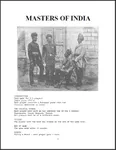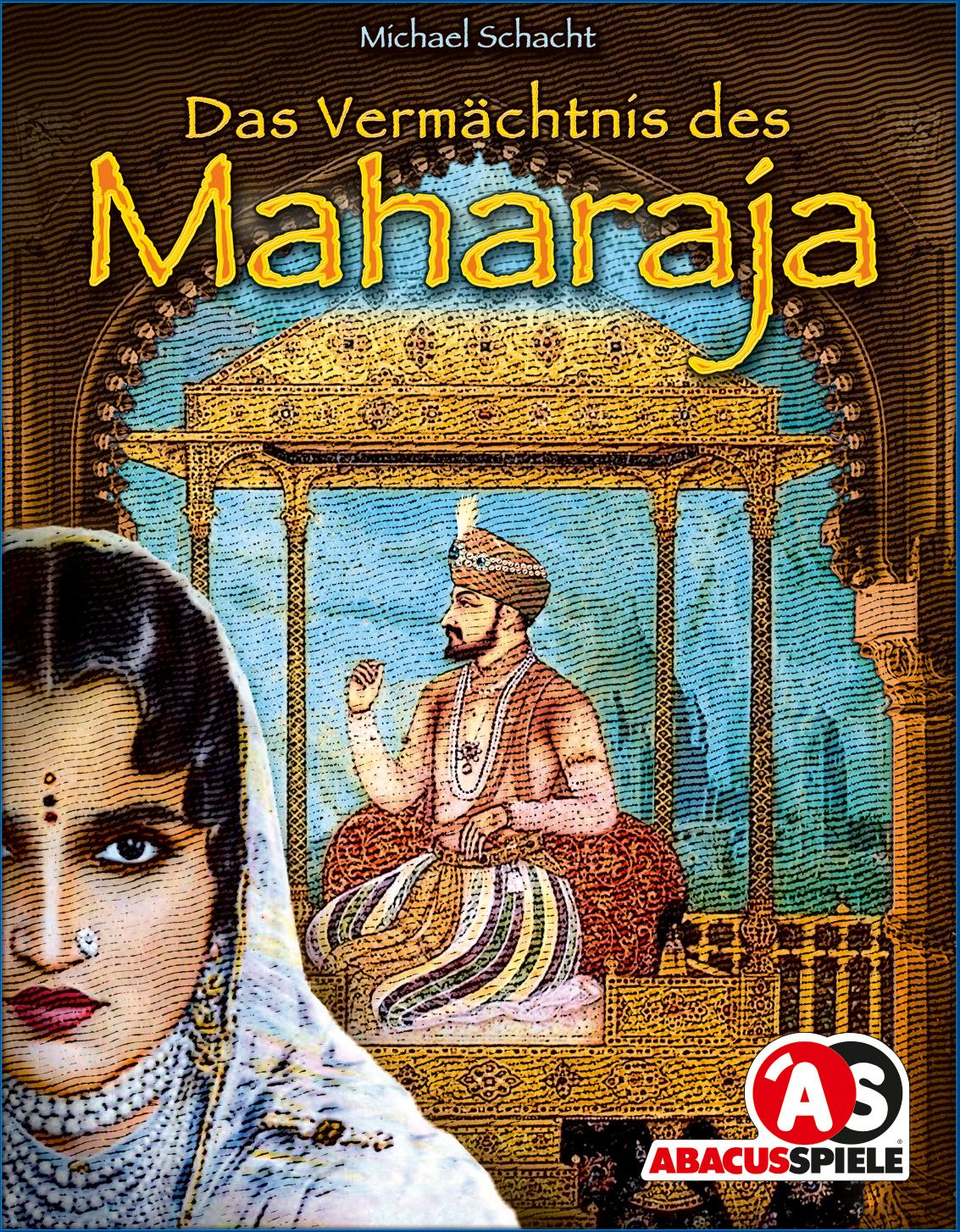Das Vermächtnis des Maharaja (2017)
Czas gry: 30
Min. wiek: 10
Gracze: 2 - 4
Wydawca: ABACUSSPIELE, Games 4 Gamers
Projektanci: Michael Schacht
Artyści: Michael Schacht
Mechaniki: Hand Management, Move Through Deck, Contracts, Open Drafting, Set Collection
Min. wiek: 10
Gracze: 2 - 4
Wydawca: ABACUSSPIELE, Games 4 Gamers
Projektanci: Michael Schacht
Artyści: Michael Schacht
Mechaniki: Hand Management, Move Through Deck, Contracts, Open Drafting, Set Collection
Pokaż opis Pokaż komentarze Trend cen
You need to collect antiques in Das Vermächtnis Des Maharaja, a.k.a. Maharaja, but more than that you need proof that those antiques form a collection and aren't merely a hodgepodge of old trinkets.
To set up the game, shuffle the 36 antique cards (six types in six colors), lay out four on the table, give each player 4-5 rupees (depending on turn order), and lay out the fifteen collection cards. Place the trade cards — numbered 4-3-3-2-2 in a four-player game — on the table in a row, then place a gold coin worth 3 rupees on each trade card.
On a turn, a player either takes the leftmost gold coin from a trade card or pays the cost shown on the leftmost trade card bearing a coin to purchase one of the antique cards on display. After doing either of these, the player can claim a collection card as long as they own the antiques depicted on that card; many collection cards force you to discard one of the antiques depicted, which then sets you back toward claiming other collection cards. To end your turn, pay taxes so that you have at most 8 rupees. As soon as all the gold coins are claimed or the antique cards purchased, the round ends, after which you refill the trade cards and lay out four new antique cards.
Once the antique cards run out, the game ends and players discard any antique cards they hold if they have only one card of that color. Then they tally their scores based on their collection and antique cards and the money they still hold. Whoever has the most points wins.
To set up the game, shuffle the 36 antique cards (six types in six colors), lay out four on the table, give each player 4-5 rupees (depending on turn order), and lay out the fifteen collection cards. Place the trade cards — numbered 4-3-3-2-2 in a four-player game — on the table in a row, then place a gold coin worth 3 rupees on each trade card.
On a turn, a player either takes the leftmost gold coin from a trade card or pays the cost shown on the leftmost trade card bearing a coin to purchase one of the antique cards on display. After doing either of these, the player can claim a collection card as long as they own the antiques depicted on that card; many collection cards force you to discard one of the antiques depicted, which then sets you back toward claiming other collection cards. To end your turn, pay taxes so that you have at most 8 rupees. As soon as all the gold coins are claimed or the antique cards purchased, the round ends, after which you refill the trade cards and lay out four new antique cards.
Once the antique cards run out, the game ends and players discard any antique cards they hold if they have only one card of that color. Then they tally their scores based on their collection and antique cards and the money they still hold. Whoever has the most points wins.
Obecnie nie mamy danych cenowych dla tej gry.
Ta gra nie jest obecnie handlowana na rynku:
Ta gra nie jest obecnie wystawiona na rynku. Jeśli chcesz sprzedać swoją, dodaj ją do rynku.
Rynek
Gra została również wydana pod następującymi nazwami:
Das Vermächtnis des Maharaja ,
El legado del Maharaja
Powiązane gry
ag.gameitem.lastUpdated: 2025-05-17 23:09:36.14

















